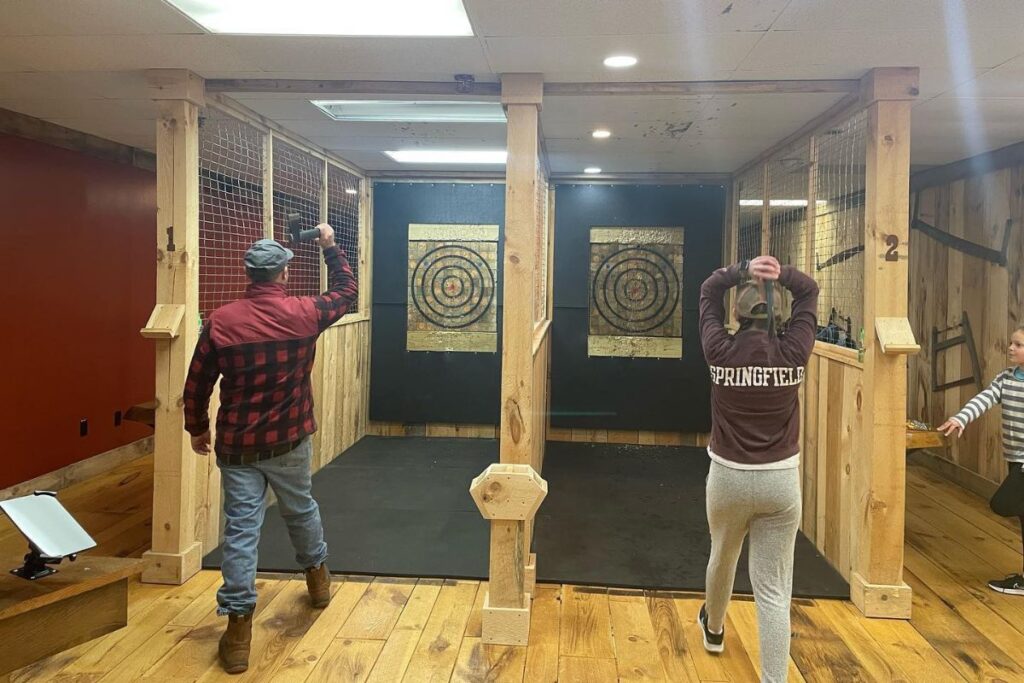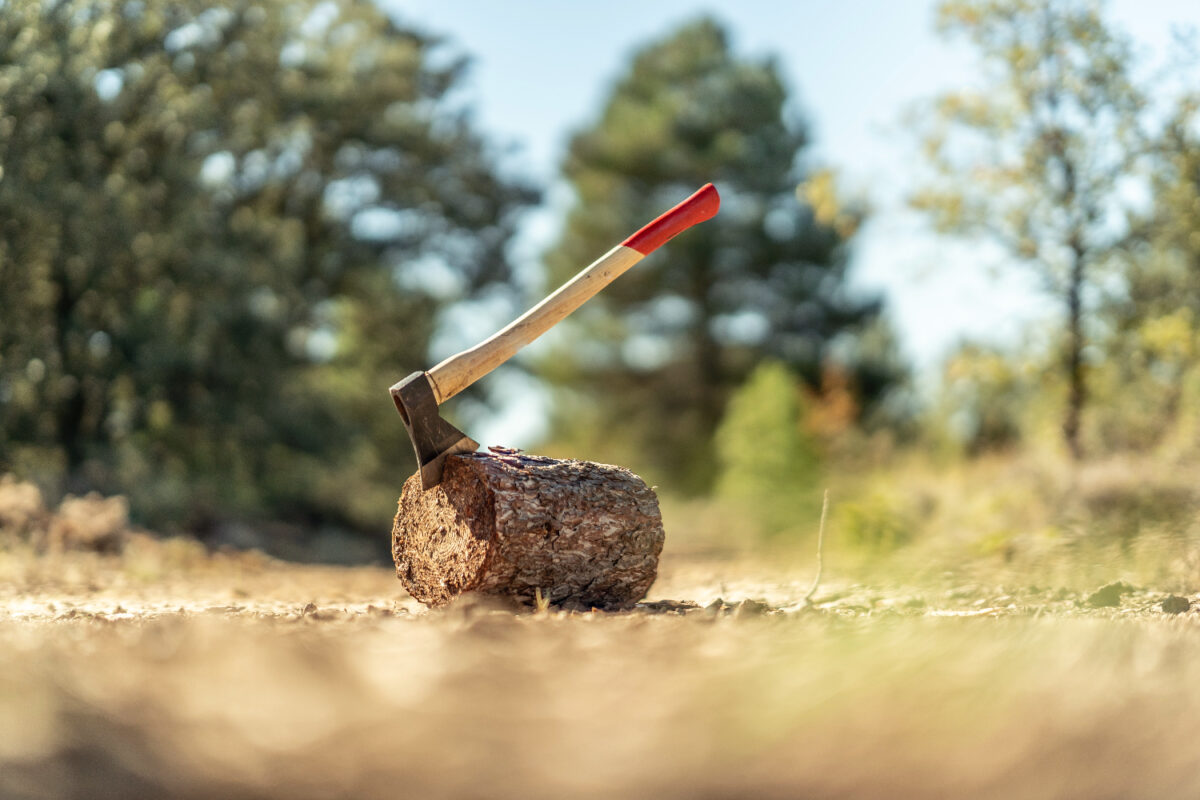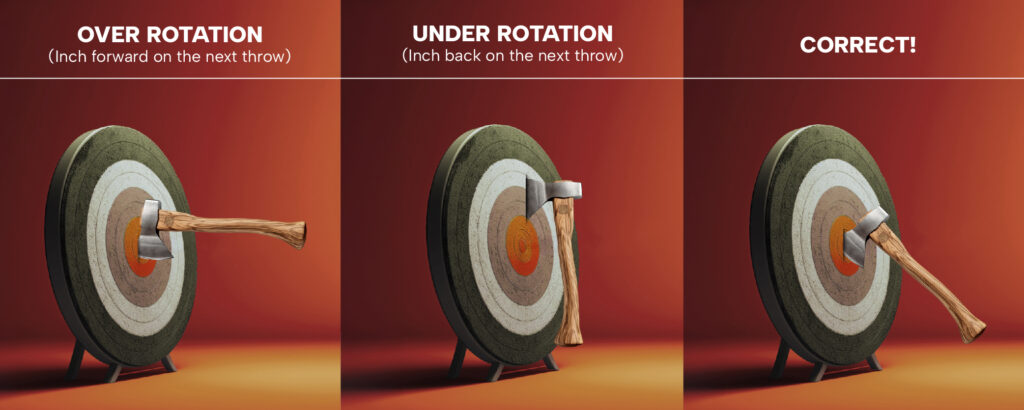Axe Throwing Rules: Official Guidelines + Creative Game Mode Ideas
Ever watch Thor swing his mighty hammer and think, “I could do that with an axe”? Well, now’s your chance to prove it. Axe throwing is like stepping into your action movie without the explosions. Whether you’re channeling your inner Viking, Marvel superhero, or lumberjack, the key to a successful throw is knowing the rules of axe throwing.
Let’s break down everything you need to know to throw like a pro, have a blast, and maybe even win some friendly bragging rights in our axe-throwing venue.
General Overview of Rules for Axe Throwing
- How to Play Axe Throwing
Here’s the deal: you throw an axe at a target. The closer you get to the bullseye, the more points you score. Think of it like darts, but way cooler and with fewer holes in your wall.
- Number of Players
Axe throwing is more fun with friends (and also more people to high-five after a great throw). Most games involve 2-4 players, but you can always rotate in larger groups.
- Average Session Time
A session typically lasts about one hour, plenty of time to find your inner axe-wielding champion and rack up some epic bullseyes.
- Age Requirements
You don’t have to be an Asgardian god to try axe-throwing, but it will make you feel like one. Whether you’re young or just young at heart, anyone can pick up an axe, take aim, and let it fly. Just be sure to follow the safety rules. Thor didn’t become worthy by being reckless.
- Who Wins
The player with the highest score wins bragging rights. Ready to sharpen your skills?
🪓Ready to test your skills? Book a lane at The Keene Axe House!
Detailed Axe-Throwing Game Rules
Choosing Your Axe
Every hero needs a weapon, and you have options in axe throwing. The hatchet is the classic choice for beginners: small, sharp, and easy to handle. Feeling bold? Grab a throwing axe for a heavier, more powerful throw. The right axe can make all the difference in your aim, accuracy, and overall cool factor.
Setting Up the Throwing Lane
Before you hurl your axe like a Norse legend, make sure your throwing lane is ready:
- Distance Matters: Stand 12-15 feet away from the target. This is the standard axe throwing rules distance. Beginners might stay closer, while seasoned throwers can step back to test their skills.
- Safety First: Every lane should have clear boundaries and barriers to keep things fun and injury-free.
Axe Throwing Stance and Grip
What Is the Distance for Throwing An Axe?
The standard axe-throwing distance is 12-15 feet. Find a comfortable spot within this range where you can throw with accuracy and control. Step forward, keep your balance, and aim true!
How To Properly Throw An Axe?
Perfecting your throw requires technique. Start with a balanced stance, grip the axe with both hands and follow through smoothly. Ready for a step-by-step guide? Visit our guide on how to throw an axe properly.
Scoring System: How Does Axe Throwing Scoring Work
- Bullseye: 5 Points 💪💪💪💪💪
Hit the center, and you’ve earned yourself a solid five points and major bragging rights.
- Inner Ring: 3 Points 💪💪💪
A solid throw that lands in the inner ring scores three points. It’s not a bullseye, but it’s a worthy shot!
- Outer Ring: 1 Point 💪
Close, but not quite. The outer ring nets you one point. Every point counts, so keep those axes flying!

🪓Grab your friends and take on the ultimate axe-throwing challenge. Book a lane at Keene Axe House!
Scoring Breakdown
Validating Scores: Where the Axe Lands vs. Where It Sticks
When it comes to scoring, the golden rule of axe throwing is simple: where the blade first makes contact with the target determines the points, not where it eventually sticks. So if your axe lands on the bullseye but bounces out. Don’t worry. You still score like a champ!
How Points Are Recorded
After each throw, a scorekeeper or the players record the points based on where the axe made contact. Keeping accurate scores is part of following the official axe-throwing rules.
Double Bullseye Bonus Points
Some games add spice with bonus points for hitting two bullseyes in a row. It’s like the holy grail of throws—tough to pull off, but oh-so-satisfying when you do.
Scoring in Head-to-Head Matches vs. Points Accumulation
The highest score after a set number of rounds wins in head-to-head matches. The total score across all rounds determines the winner in points accumulation games. Know your format, aim true, and may the best thrower win!
Match Formats
Elimination-style vs. Round Robin Matches
Elimination-style matches knock players out until only one thrower remains standing. Think gladiator-style axe combat (without the actual danger). Round Robin matches give every player a chance to throw against every other player. More throwing, more fun!
Best-of-Three and Tournament Play Formats
For a dramatic flair, best-of-three matches keep the suspense alive. Want to take it to the next level? Organize a full-on tournament play, the ultimate test of skill, strategy, and stamina!
Common Axe-Throwing Disagreements (and What the Rules Say)

Even the friendliest axe-throwing sessions can get heated when disputes arise. Let’s break down some common arguments and what the official axe-throwing rules have to say.
Arguments over whether an axe stuck properly or bounced off
If an axe hits the target but doesn’t stick, the points are determined by where the blade first makes contact. So, no matter how dramatic the bounce, you score like a pro if it touches the bullseye.
Arguments about whether certain throws are legal (e.g., overhand vs. underhand)
Most axe-throwing game rules favor the overhand throw, but venues may allow variations like underhand or trick throws if everyone agrees upfront. Before you pull off a movie-worthy move, make sure it’s not grounds for a penalty.
Disputes over who should throw first or the order of play
Many venues resolve this with a quick coin toss or a game of rock-paper-scissors. Setting this rule at the start prevents a mid-match debate about turn-taking.
Arguments about the amount of time a player should take between throws
Dragging out your throw like a dramatic showdown? While most matches don’t have strict time limits, keeping the flow smooth is part of good sportsmanship. Agree on a general pace so everyone gets their fair share of throws.
Disagreements about when penalties should be applied (e.g., stepping out of the lane)
Stepping out of the lane? That’s a no-go. The typical penalty is a loss of turn or points. The rules for the throwing game emphasize safety, so keep your feet where they belong and throw responsibly.
Safety Measures in Axe Throwing: The Keene Axe House Policies
At The Keene Axe House, we believe in throwing responsibly. Follow these safety tips to keep your session safe, fun, and memorable for all the right reasons.
Proper Supervision
Think of our staff as your axe-throwing guides. They’ll show you how to throw like a pro while keeping the action safe and organized. Listen to their tips they’re like the Gandalf of axes, and safety is their top priority.
Protective Gear
There is no need for battle armor, but closed-toe shoes are necessary. Some throwers prefer gloves for extra grip, but that’s optional. Safety first means style second. Leave the flip-flops at home.
Location of Emergency Exits and Medical Assistance
Before the axes fly, know your surroundings. Familiarize yourself with exits and first aid stations. While accidents are rare, it’s always wise to be prepared. After all, even the best warriors have backup plans.
Fun Variations of Axe Throwing
Knockout 🪓
Axe throwers compete in a survival-of-the-fittest showdown. In each round, players throw once, and the lowest score is eliminated. The last player standing claims victory—and maybe some serious bragging rights.
21 🪓
The goal is to hit exactly 21 points, but there’s a twist: if your score goes over 21, you drop back down to 11. It blends strategy and precision perfectly, keeping the tension high with every throw.
Tic-Tac-Toe 🪓
Draw a grid on the target and take turns aiming for squares. The first to complete a line wins! It’s like playing Tic-Tac-Toe on a whiteboard with axes instead of markers—pure competitive fun.
Ready to play? Book a Lane at Keene Axe House!
Feeling the thrill? It’s time to step up and throw like a champ. Book your lane at Keene Axe House. Whether aiming for a perfect bullseye or having fun with friends, we’ve got you covered. Want to take the action on the road? Check out our axe-throwing trailer, perfect for parties, events, and epic gatherings!
FAQs
What does the blue dot mean in axe throwing?
The blue dot typically represents a lower-scoring area on the target. It’s used to add some variety to the game and make it more challenging.
How long does a game of axe throwing last?
Axe throwing sessions usually last around an hour, depending on the number of players and how quickly each thrower gets into their rhythm.
What is a clutch in axe throwing?
A clutch is a critical throw, usually at the end of a match or round, that can earn you extra points or win the game. It’s the make-or-break shot!
Is axe-throwing fun for two people?
Definitely! Whether you’re competing head-to-head or just tossing for fun, axe throwing is a great activity for two.













